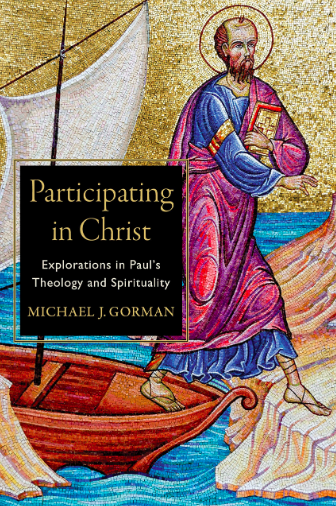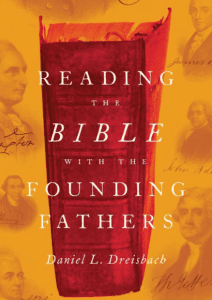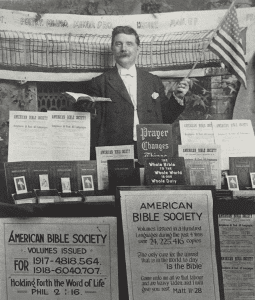 In a spectrum from history to systematic theology, where does someone like NT Wright fit? Is he closer to the history or the systematics end? Edward Klink III and Darian Lockett, in their fine new book, Understanding Biblical Theology, put Wright smack-dab in the middle of the two, but they put D.A. Carson’s history of redemption approach closer to history and Wright closer to theology. More of that later.
In a spectrum from history to systematic theology, where does someone like NT Wright fit? Is he closer to the history or the systematics end? Edward Klink III and Darian Lockett, in their fine new book, Understanding Biblical Theology, put Wright smack-dab in the middle of the two, but they put D.A. Carson’s history of redemption approach closer to history and Wright closer to theology. More of that later.
In their spectrum there are five types: history, history of redemption, worldview story, canonical and theological construction. BT1, BT2, BT3, BT4, and BT5, and today we look at BT3, worldview story. The big idea is learning to read each passage of the Bible in light of the worldview story/narrative of the Bible, however that might be constructed — and the commentary series of which I am the General Editor (now called “Story of God Bible Commentary”) will offer commentaries in light of this worldview story approach to the Bible. Had we had this book we would have asked each author to “subscribe” to BT3!
Where would you place NT Wright on the spectrum from history (left) to theology (right)? Is he more historical or theological than the History of Redemption/Carson?
Some major theoretical issues:
1. Narrative is both a literary and philosophical category.
2. Worldview story inherently critiques historical criticism in the direction of Hans Frei’s famous Eclipse of Biblical Narrative.
3. The way to read a passage is to see its location in the overall plotline of the Bible’s narrative/story.
4. This narrative speaks to modern readers/Christians.
This worldview story, in their view, is more connected to academy than to church, and here I would contend the pre-2oth Century church especially did not carefully distinguish church from academy so that appealing to anything before the (early?) 20th Century church is not much of an appeal.
Big for this approach is how the NT uses the OT; the sources for this approach are both canonical and non-canonical. The subject of the this kind of “biblical” theology is the narrative structure at work in the texts to which the author/s appeal, including both canonical and non-canonical authors.
Their sketch of NT Wright’s works is adequate, though it is more than difficult to read, let alone put together, all of them. My read of their sketch is that it is adequate. They focus on two words, story and worldview, then combine them into Tom’s approach being a worldview story. (I don’t know that Tom ever uses that expression.) But his “story” brings into concrete reality a worldview that is a set of assumptions. More important, NT Wright reads the NT in light of a “historically reconstructed ‘story’ of Israel’s Scriptures” (112). That’s dead-on. NT Wright’s method is critical realism. His worldview story is tied into Judaism’s story and stories and worldviews. The NT “continues” the OT story.
Well, what about the “image of God”? As I have said, I want to see if I can flesh out how each kind of biblical theology would explain “image of God” in Gen 1:26-27. NT Wright, connecting to folks like John Walton, sees the expression in light of the Ancient Near East and in the context of the role given to humans in creation: as those who represent God. We/they are, in other words, both kings and priests. This theme is unfolded in the Story of the Bible — to Abraham and Israel and to David and then to Jesus, as the priest-king, who is King/Messiah, and then as the Temple itself as well. And on to Paul’s use of Christ as temple and king and priest, into Hebrews, and with the people of God as kings and priests … to the new heavens and new earth. In other words, it’s not so much about progressive revelation as the continuation of an idea as the Story unfolds, a Story that gives meaning to the Bible and shows where humans fit in God’s Story, but also provides meaning for us today.
I have some issues with how the authors sketch the spectrum, and after reading the two chps on History of Redemption and Worldview Story I am less confident of their ordering. Here’s why:
1. NT Wright calls himself a historian; none in the History of Redemption self-identifies as historians. I find it odd then that they place Wright closer to the theology end.
2. Both read each passage in light of a “worldview” or “theology,” so this point applies to both: each reads each passage in light of a theology.
3. NT Wright is criticized in both of their chps for being too tied into a historical method; the BT2 History of Redemption approach is not criticized for its historiography.
4. Hovering over this entire set of chps is what the authors mean by “history,” and a good study of historiography shows that NT Wright’s approach to History is much more in tune with what history is — the creation of a story/narrative out of facts, sometimes conceived of as discrete facts, which is what NTWright does in his book. BT2 seems to me to be more in tune with theology and less in tune with this theory of history.











